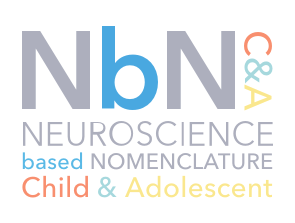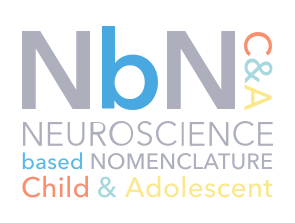Mission and Scope
It has become clear that the current pharmacological nomenclature of psychotropic medications does not reflect our contemporary knowledge, nor does it inform properly the clinician of neuroscience-based prescriptions. Very often we prescribe “antidepressants” for “anxiety” disorders or “second-generation antipsychotics” to depressed patients.
This practice is confusing.
• The mission of the nomenclature is to embed our current neuroscience advances in the nomenclature.
• The scope is to include all the medications with CNS indications and to harness this new nomenclature to help clinicians when they are trying to figure out what would be the next rational “neuropsychopharmacological step”.
This proposed nomenclature aims to reflect the current pharmacological knowledge base and cannot necessarily represent the ultimate scientific truth.
The taskforce that assembled this app could have taken the stand that our current knowledge base is not enough to define the primary target or the correct mechanisms of action. But as a taskforce, we feel that it’s better to present a cutting-edge scientific interpretation than to wait for the definitive conclusion. We need to treat our patients now, and we cannot postpone treatment until all the facts are known.
Therefore this nomenclature is based on:
1. The need to treat now.
2. Updated neuroscience insights.
3. The judgment of the members of the taskforce.
Along these lines, we have come up with the following proposal:
The Nomenclature:
Pharmacological Domain and Mode of Action – reflects the current knowledge and understanding about the targeted neurotransmitter/ molecule/system being modified and the mode/mechanism of action.
4 Additional Dimensions:
Approved Indications – based on the recommendations of major regulatory bodies (e.g. FDA, EMA, etc.)
Efficacy and Side Effects – Driven from positive single, large, RCT and/or “heavy solid weight” clinical data. Only prevalent or life-threatening side effects were included
Practical Note – Summarizes the clinical knowledge that has been "filtered" through the taskforce's "sieve"
Neurobiology – This dimension is focused on the biology. It is divided into preclinical and clinical sections, with the emphasis on the latter
For those who would like to know more abo derived from empirical data.ut the pharmacology, there is a direct link to the relevant site of IUPHAR – our collaborator in this endeavour.
As this is on-going process, we recognize that there are going to be omissions. Based on your feedback, and taking into account the “wisdom of clinicians”, new reports and findings, appropriate updates (e.g. later editions) will be undertaken.
NbNomenclature app, can be downloaded free of charge from Google Play and the iOS App Store.
7 Comments
1. Medication Included
In principle, medications with approved CNS indications are included. In this app you will find the medications that we were aware of. The taskforce welcomes proposals to include medications that for one reason or another were omitted.
1a. Fixed combination of medication
The taskforce decided not to include them. This decision reflects the generally negative view of the taskforce regarding this type of prescribing practice.
2. Inclusion criteria for the efficacy section
Positive single, large, RCT and/or “heavy solid weight” clinical data.
3. Inclusion criteria for the side effects section
Only prevalent or life-threatening side effects were included.
4. The practical note
Summarizes the clinical knowledge that has been "filtered" through the taskforce's "sieve".
5. Neurobiology
This dimension is focused on the biology. It is divided into preclinical and clinical sections, with the emphasis on the latter.
6. Affinity
Included only were it is clinically relevant and if human data is available. Please note that it is incomplete in this edition but we intend to complete it for the future.
7. Uptake Inhibitors
Figures for the SERT/NET or NET/SERT uptake inhibition have been taken from studies of uptake inhibition which use human transporters. If there is more than one study we have taken a mean. If there are only rat transporter studies, we have used these in the same way but added (rat) to the description.
11 Pharmacological Domains
1. Acetylcholine
2. Dopamine
2a - Dopamine, norepinephrine
2b - Dopamine, serotonin
2c - Dopamine, serotonin, norepinephrine
3. GABA
3a - GABA, glutamate, dopamine
4. Glutamate
4a - Glutamate, GABA
5. Histamine
6. Ion Channel
6a - Ion Ca channel
6b - Ion Na channel
6c - Ion Na, Ca channel
7. Lithium mimetic
8. Melatonin
9. Norepinephrine
9a - Norepinephrine, serotonin
9b - Norepinephrine, serotonin, dopamine
10. Opioid
11. Serotonin
11a - Serotonin, dopamine
11b - Serotonin, melatonin
11c - Serotonin, norepinephrine
10 Modes of Action
1. Receptor agonist
2. Receptor partial agonist
3. Receptor antagonist
4. Reuptake inhibitor
5. Reuptake inhibitor and releaser
6. Reuptake inhibitor and receptor antagonist
7. Enzyme inhibitor
8. Ion channel blocker
9. Positive allosteric modulator (PAM)
10. Enzyme modulator
MultiModel (MM) = more than three relevant mode of action

